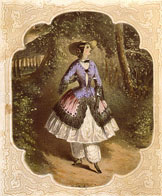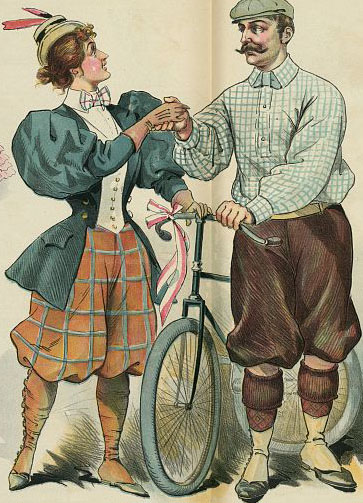Sign up for the Family Tree Newsletter! Plus, you’ll receive our 10 Essential Genealogy Research Forms PDF as a special thank you.
Get Your Free Genealogy Forms
"*" indicates required fields
In 1849, a group that advocated reform dress for women advised them to wear “Turkish dress.” That meant a billowy pant that ended below the knee, worn beneath a shorter dress.
This illustration is from sheet music composed by William Dressler in 1851. He called his piece “The Bloomer Waltz.” When Elizabeth Smith Miller wore the style to visit her temperance friend Amelia Bloomer, the press began referring to these “trousers” as bloomers. Women’s rights reformers claimed they were healthier than the restrictive corsets and dress styles then in fashion. While a few women wore bloomers, including Civil War doctor Mary Walker, shown below, the trend never caught on with the general public.
But by the 1890s, the bloomer was back. It was a safety and modesty issue for women who wanted to ride bicycles. As this illustration in an 1895 Puck magazine shows, both men and women wore them.
By the turn of the century, women’s colleges adapted the style for female athletics such as basketball teams like the one here from Smith College (found on Wikipedia). Bathing suits of the early 20th century also featured the bloomer look.
Bloomers remained in fashion for women attending gym classes into the mid-20th century. Those forward-thinking women of the 1850s would be happy to know that they were trendsetters.
Solve your family photo mysteries with these books by Maureen A. Taylor:








